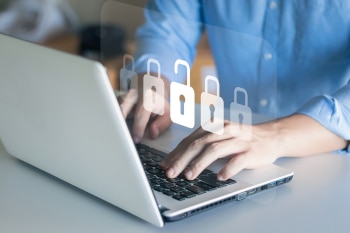
The Biggest Threats to Your Personal Information
Call Us Today For Your Shredding Estimate
 Identifying Your Personal Information
Identifying Your Personal Information
There once was a time when protecting your personal information was barely a concern. That time is long past, and securing your identifiable information is a bigger and much more difficult challenge now. With information being available on paper and in digital format, the gaps are larger and more numerous.
Personally Identifiable Information (PII) is information that directly identifies an individual (their name, address, social security number or other identifying number or code, telephone number, email address, etc.) or the identity of specific individuals in conjunction with other data elements (a combination of gender, race, birth date, geographic indicator, and other descriptors). This information can be maintained on paper, electronic, or other media such as microfiche.
To successfully manage your personal data, you need to identify the potential threats and institute solutions to try and avoid them.
Attacks on Your Personal Information
Loss
The digital age was intended to eliminate the consumption of paper, but that didn’t happen. We still tend to keep personal information written on paper, and by doing that, it can be misplaced. And even in a digital world, we still carry around a pocket full of physical information like our passport, driver’s license, credit cards, health cards, and more. When your wallet is misplaced, you have lost your most precious cargo and at the same time, someone else has obtained everything they need to steal your identity and cash.
Expired identification documents replaced by newer ones are at higher risk of getting lost. When documents aren’t regularly used, they aren’t protected as much and are more likely to be lost in the shuffle of papers when cleaning or moving. It is important to dispose of outdated documents by shredding them to a point they are no longer readable. Digital information can accidently be deleted or corrupted, making backups a vital safety net.
Theft
If your wallet or purse is stolen or found, you are at the mercy of the person in possession of it. Will they steal any cash and valuable items for their own personal use, perhaps use or sell your credit cards to other thieves, and dispose of the rest? The chances are high. These are the same types of people that target your digital information through phishing, hacking, or discarded drives that contain PII. Identify theft is one of the fastest growing crimes in America. A stolen Social Security Number can be used to obtain personal information and can take your credit hostage for the thieves own use.
It is important to secure and protect your physical and digital PII and destroy any outdated information. For digital safety, use and regularly change good passwords, learn to recognize fake emails and links, secure your internet connections, and use virus protection software.
School
Schools are an ideal target for hackers because they are a goldmine of personal information that’s rarely protected by the same level of cyber security used by larger companies. With the increase and change to remote learning and virtual school, there has been a record-breaking level of cyberattacks. This has included denial of service (DoS), phishing, ransomware, and data breach or leaks.
College students are prime credit card fraud targets. With a new identity fraud victim every two seconds, there is a significant risk to students. While having a credit card is a great way to build credit, it also opens up the risk of stolen identity and fraud which comes in the form of credit card skimmers, data breaches, public WiFi hacks, and phishing sites.
Students can protect themselves by safeguarding their wallet and PII and keeping it close by or locked up, using a Virtual Private Network (VPN) on campus or in public, password protecting all devices, using a password manager for online accounts, checking online accounts, bank accounts, and credit ratings regularly, and reporting any fraud immediately.
Damage
Unprotected PII, whether physical or digital, is at risk of being damaged and lost due to the elements like water, fire, aging, or physical damage. Physical and digital backups are an ideal protection against critical information being damaged or lost. Keeping the backups distant from each other increases the safety net. Physical documents kept at a separate location avoids a similar disaster (like fire) to both. As a protective measure, digital information should also be backed up to an outside server or hard drive taken offsite.
Protecting Your Personal Information
Keeping your PII organized is a great start. Know what and where to keep your information, what to back up, and how to destroy it. Keep documents locked up and only carry what you need. Keep either digital or paper copies of personal information so that if your PII is lost or stolen, you can immediately notify authorities, block any illegal use, and get it replaced as soon as possible. Don’t share any PII with unsecure websites or unfamiliar organizations or people. Don’t hold on to any expired information.
Wiggins Shredding in West Chester, PA are experts at destroying PII. We are secure and compliant and offer commercial, residential, one-time or routine shredding. Check out one of our upcoming Tear Fests or at one of our affordable drop off locations. For more information, give us a call at 610-692-TEAR(8327) or complete the form on this page.


